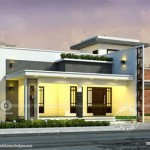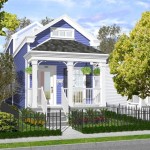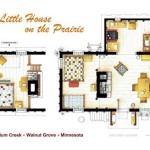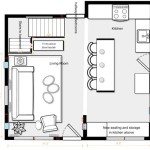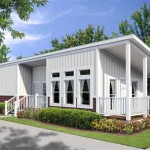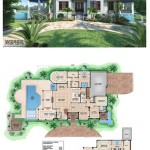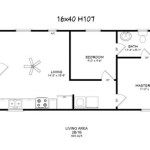Cabin House Floor Plans: A Guide to Rustic Living Design
Cabin house floor plans offer a unique blend of rustic charm and practical living space. Whether envisioned as a weekend retreat or a permanent residence, careful consideration of the floor plan is crucial for maximizing functionality and comfort within the often limited square footage of a cabin.
Several key factors influence the choice of a cabin floor plan. The intended use of the cabin, whether for recreational purposes, full-time living, or rental income, plays a significant role. The number of occupants, including family members or potential guests, dictates the necessary number of bedrooms and bathrooms. The surrounding landscape, including topography and views, can inform the placement of windows and outdoor living spaces. Finally, budget considerations impact the size and complexity of the chosen design.
One popular cabin floor plan style is the open-concept design. This layout typically combines the living room, dining area, and kitchen into a single, spacious area. Open-concept plans promote a sense of community and allow for easy interaction between occupants. They also create an illusion of larger space, which is particularly beneficial in smaller cabins. However, a potential drawback is the lack of privacy and the possibility of noise transfer between different functional zones.
Conversely, closed-concept cabin floor plans offer distinct, separated rooms for different functions. This layout provides increased privacy and minimizes noise disruption between spaces. It can also create a more formal and traditional atmosphere. However, closed-concept plans may feel less spacious and can limit the flow of natural light throughout the cabin.
Loft-style cabin plans are another popular option, particularly for smaller cabins. By incorporating a loft area, often used as a sleeping space or additional living area, these plans effectively maximize vertical space. Lofts can add a unique architectural element and create a cozy, secluded atmosphere. However, accessibility can be a concern, particularly for individuals with mobility limitations. Additionally, lofts may lack headroom and can be prone to temperature fluctuations.
A-frame cabin designs are instantly recognizable for their steeply angled roofs, which extend to the ground. This distinctive shape creates a high, vaulted ceiling in the main living area, lending a sense of spaciousness. The sloping roof also efficiently sheds snow and rain. However, A-frame designs can result in limited usable floor space at the edges of the cabin due to the angled walls. Furniture placement can also be challenging.
Ranch-style cabin floor plans offer single-story living, making them accessible and convenient for all ages. These plans often feature a sprawling layout, providing ample space for various activities. The absence of stairs simplifies navigation and minimizes potential safety hazards. However, ranch-style cabins require a larger footprint compared to multi-story designs, potentially impacting land usage and construction costs.
When selecting a cabin floor plan, careful attention should be paid to the placement and size of windows. Windows not only provide natural light but also offer views of the surrounding landscape. Strategically placed windows can maximize energy efficiency by passively heating and cooling the cabin. Consider the orientation of the cabin to optimize sunlight exposure throughout the day.
Outdoor living spaces are an integral part of the cabin experience. Decks, patios, and porches extend the living area and provide opportunities for relaxation and entertainment. Covered porches offer protection from the elements, while open decks provide unobstructed views. Consider incorporating features like outdoor fireplaces or built-in seating to enhance the functionality and enjoyment of these spaces.
Storage solutions are crucial in cabin homes, where space is often at a premium. Built-in cabinets, shelves, and drawers can maximize storage capacity while maintaining a clean and organized aesthetic. Under-stair storage, loft storage, and built-in benches with storage compartments are just a few examples of innovative storage solutions for cabin floor plans.
The choice of materials plays a vital role in the overall aesthetic and durability of the cabin. Traditional log cabins evoke a rustic and authentic feel. Timber frame construction offers exposed beams and a spacious, open feel. Modern cabins may incorporate materials like steel and glass for a contemporary aesthetic.
Finally, consider the local building codes and regulations when selecting a cabin floor plan. These regulations may dictate specific requirements for setbacks, building height, and other aspects of the design. Consulting with a local architect or builder can ensure compliance with all applicable regulations.
Choosing the right cabin floor plan involves careful consideration of various factors, including lifestyle needs, budget, and the surrounding environment. By thoroughly evaluating these elements, individuals can select a plan that maximizes functionality, comfort, and aesthetic appeal, creating a truly personalized and enjoyable cabin living experience.

Small Cabin Plan With Loft House Plans

Cabin Floor Plan Log Home Plans Living House

Small Cabin Floor Plan By Max Fulbright Designs

Cabin Style House Plan 3 Beds 2 Baths 1659 Sq Ft 47 437 Lake Plans Sims

Recreational Cabins Cabin Floor Plans

Small Mountain Cabin Plan By Max Fulbright Designs Floor Plans House

Rustic Vacation Homes Simple Small Cabin Plans Houseplans Blog Com

Cabin Floor Plans Authentic Log Cabins Clearwater Historic Lodge

16 X 24 Aspen Cabin Architectural Plans Small

Low Cost Cottage House Plans Vacation And Cabin

